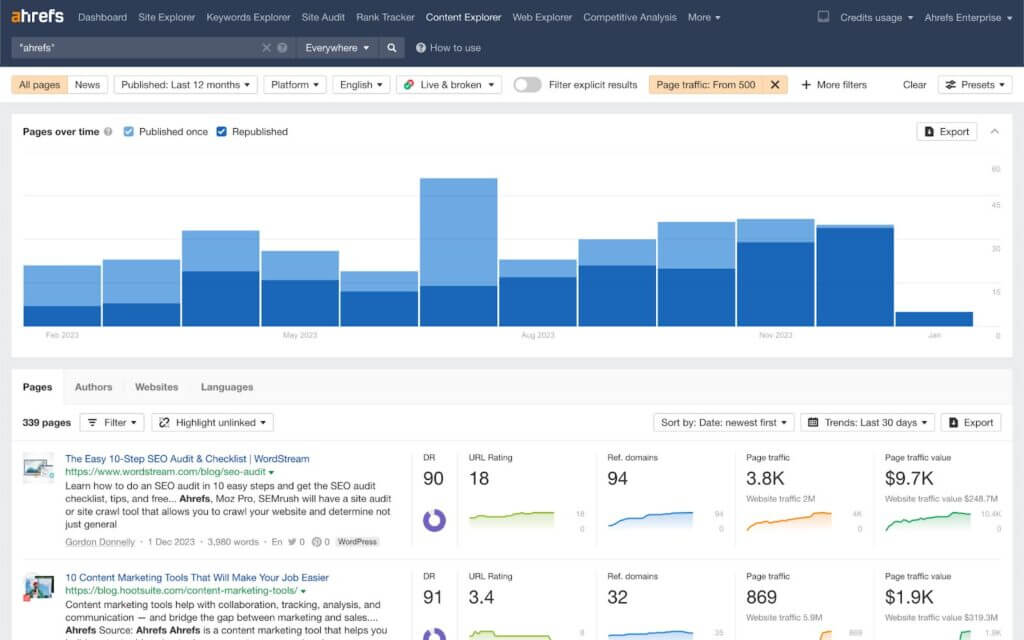The State of Digital Marketing in 2026: Platforms, Pitfalls, and What’s Next
Every hour, the digital marketplace resets. A brand’s content might hold the top spot in search results one moment, only to be overtaken by a trending video the next. Teams face mounting pressure to decide where to focus, as marketing tactics change quarter by quarter. Budgets and strategies are revised constantly, but lasting clarity remains elusive.
This is the reality of digital marketing in 2025. Discovery now spans a growing mix of channels, and every new update can disrupt established plans. As digital behaviors change unexpectedly, tactics that used to work frequently lose their effectiveness. What most teams lack is not access to more data or larger budgets, but a framework for clarity and the marketing software required to act when it counts.
If your organization’s goal is reliable action rather than trial and error, this post will provide a practical approach for moving forward.
Table of Contents
Where Digital Marketing Stands Today

Search engines, social platforms, and AI assistants have become the main ways people discover brands, forcing teams to manage more channels without additional resources. Gartner’s 2025 CMO Spend Survey reports that marketing budgets are flat at 7% of revenue, and inflation has reduced the impact of paid media. Many leaders are streamlining agencies, consolidating roles, and turning to AI for greater efficiency.
Maintaining visibility now requires both technical skill and adaptability. As generative AI influences how content is discovered, teams benefit more by focusing on strong data and flexible strategies, instead of constantly chasing updates.
Recurring Challenges in Modern Marketing
Despite the steady introduction of new tools, familiar challenges remain. Many marketing leaders find themselves responding to new obstacles instead of producing results. Common issues include:
Overreliance on Paid Advertising
Spending heavily on paid channels can bring brief spikes in website traffic, but these gains are rarely sustainable. If budgets are reduced or platform policies change, performance declines. Rising costs for paid reach add pressure and highlight the need to support organic discovery alongside campaigns.
Disconnected Tools
Teams relying on separate systems for analytics, publishing, and reporting face extra manual work and risk missing performance signals. Disjointed tools can make it difficult to spot key trends or respond quickly.
Surface-Level Metrics
Tracking basic figures such as clicks or impressions rarely delivers useful insight. Without access to independent, high-quality data, marketers risk misreading audience behavior or missing early signs of change.
Reactive Approach to Platform Changes
Constant updates from search and social platforms often drive teams to chase short-term adjustments instead of following a consistent strategy. This reactive pattern increases wasted spend and makes it difficult to build lasting results.
These issues add up. Teams lose time, resources are stretched thin, and building momentum becomes harder. Marketers need connected systems and actionable data to regain focus and set a clear direction.
The Role of Next-Gen Marketing Platforms
Complexity defines today’s digital marketing environment. Many teams now turn to solutions like Ahrefs, an enterprise marketing software that brings planning, analytics, content management, and reporting into one system. This helps marketers act more quickly, without switching between different tools.
What distinguishes these platforms is their ability to provide timely, relevant insight. Rather than automating for speed alone, they analyze performance as it happens, identifying patterns such as drops in engagement or underperforming formats. This supports faster prioritization and more effective responses.
A reliable AI marketing software adapts as discovery patterns shift. Whether responding to privacy rules, new search habits, or emerging platforms, an adaptable infrastructure keeps teams responsive without forcing a reset every quarter. In an environment where direction changes quickly, that kind of preparedness is essential.
Case Study: Ahrefs as a Unified System for Smarter Marketing

Ahrefs, an AI-native SaaS marketing platform, provides a model for what next-gen solutions can achieve. With over 15 years of independent web data, the platform powers its in-house AI models on one of the world’s top 50 supercomputers. It addresses long-standing issues like fragmented tools, slow insights, and operational delays. Here’s how:
- Integrated Workflows: Teams can work in a unified environment that supports keyword tracking, content planning, and ongoing results, reducing coordination overhead.
- Real-Time, Independent Data: Ahrefs’ proprietary web crawler constantly indexes fresh data across backlinks, keyword rankings, and SERP structures. This allows marketers to see how discovery trends shift by region, industry, or platform in real time.
- Strategic AI for Insight: Rather than pushing generic suggestions, Ahrefs’ in-house AI models are trained to surface useful signals, like trending search terms, changing audience interests, or competitor gains. These are insights designed to support marketers under pressure to make fast, informed decisions.
- Built for Usability Across Roles: SEO leads, content strategists, and digital managers can access advanced insights without a technical learning curve. Campaigns can be launched, adjusted, and reported on without handoffs or data translation.
- Ready to Handle What’s Next: As discovery expands beyond traditional search to AI assistants, social media, and emerging content formats, the platform is investing in architecture that anticipates these changes.
By reducing complexity and maintaining depth, Ahrefs helps teams stay organized, make well-supported decisions, and maintain visibility across all marketing efforts.
What Discovery Looks Like Beyond the Search Engine
Looking ahead, digital marketing isn’t tied to any one channel or tactic. Discovery happens not just in search engines, but through AI-generated answers, voice assistants, and in-app search on social platforms. Many brand interactions now take place away from traditional search.
Content visibility depends increasingly on user intent, behavior, and system context, not just static keywords. Algorithms prioritize responses based on phrasing, device, and past engagement. Predictive marketing analytics software and recommendation engines also determine what appears, when, and where, changing how teams approach timing, structure, and channel mix.
To respond effectively, marketers need tools that support accurate measurement, rapid testing, and planning based on how people actually find information. A digital marketing platform like Ahrefs offers a stable foundation for research, analysis, and timely action, becoming essential as digital behaviors shift.
Sustaining Brand Visibility in a Changing Digital Environment
Digital marketing in 2025 requires accuracy, adaptability, and practical systems that enable measurable action. As discovery formats spread, from AI summaries to in-app search on social platforms, teams using outdated workflows or slow reporting will lose visibility.
Teams that choose future-ready platforms built for speed, clarity, and integration are in a stronger position to meet these shifts. An all-in-one AI marketing platform like Ahrefs brings campaign planning, analytics, and brand visibility together, so teams work with fewer tools and clearer insight.
Moving forward, staying relevant depends on having infrastructure built for ongoing change. Marketers who review their current processes and invest in adaptable systems position their brands for consistent, measurable growth.